Hey guys,
Well here goes the first installment (or second if you count the initial clearcoat) of my Funhouse playfield restoration.
This post will hopefully provide some insight into the tools, and methods needed to bring your own playfield back to life through the use of an airbrush.
I will be tackling the lighter blue areas in this demonstration, for no other reason than because i wanted to do that colour first.
Preparing your surface should be the first thing you do. With the two initial clears down and cured, give the playfield a good wipe over with prepsol or another automotive type wax and grease remover.
Wipe this off with another rag (lint free).
In order to achieve nice clean lines of paint, you really need to use good masking material. Frisket mask is the only product i use. For the following reasons...
* Its low tack (similar to a post-it note) so it is easily removed and wont pull up any other paint with it...
* Its see through, so you can see the lines you are cutting match the surrounds...
* It is easily pierced by a sharp blade. You do NOT have to press down at all with the blade. With practice, you should be able to score your lines without leaving a mark on the playfield.
* It is relatively cheap, as you shouldnt need any more than 4 meters for a worn playfield.
* It really does WORK. It leaves a very proffessional finish, and the lines are razor sharp - absolutely NO bleed.
With the playfield ready and waiting, roll out some of the frisket mask, and decide on a colour you want to retouch. You may only need a small section, so dont cut off a whole meter for one small line. Cut off only what you need, as the rest of the playfield can be masked off with newspaper.
Line up the frisket paper over the area you intend to spray. It should be noted, that the frisket has a paper backing, allowing you to move it around until you NEED the tack. Use a weight of some kind to hold it in place for the next step...
Dont peel back the whole sheet of mask and expect to be able to apply it without getting bubbles in your film. You need to peel back about two inches of mask, and drape it back over itself (see image). With this completed, cut off about half the paper backing (see image). Pick up the frisket that you draped in the earlier step, and carefully rest it back down on your playfield.
All lined up and ready to peel...
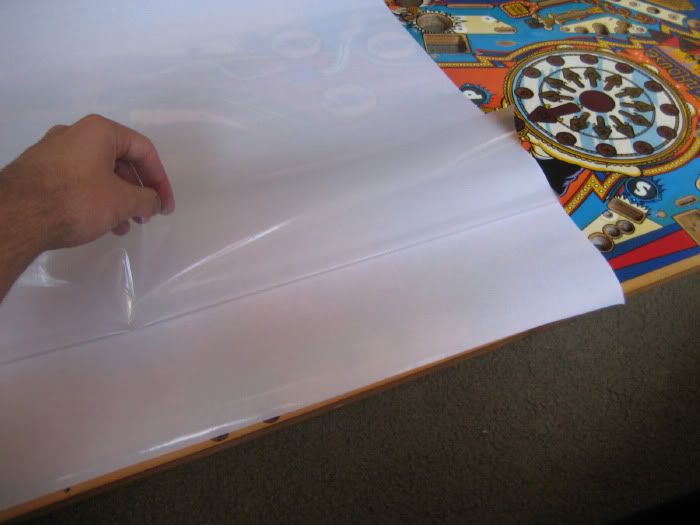
Frisket draped back over itself, and getting ready to cut an inch off the backing paper...

Now that it has been applied to the playfield, you can remove the weight, lift up the paper-backed frisket, and begin to slowly drag back the paper backing; being careful to rub down LIGHTLY the mask onto the playfield. When you have completed the section, it should something like this...
All applied nice and bubble free...
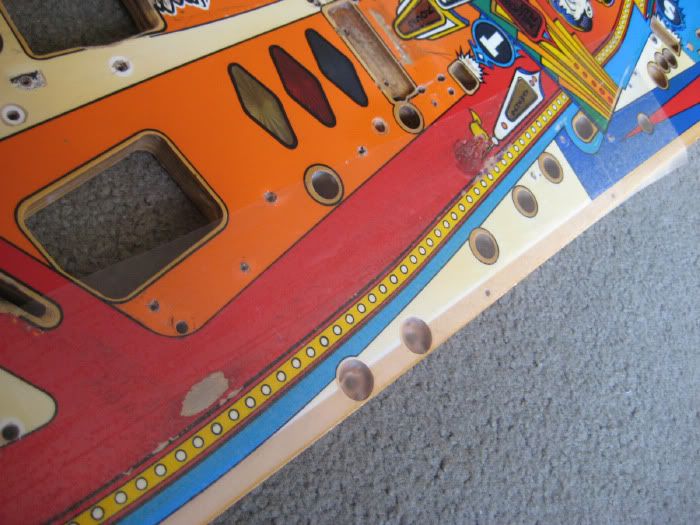
This is the fun part. Take your blade, i would buy a NEW ONE - and you need to lightly begin to remove the sections that you inted to respray. In this case, im doing the light blue, so that would be the only section i want exposed to the paint.
Complete this for the entire mask. It is a slow process, but once you have finished - its extrememly rewarding once you remove your stencils, to see the results. Remove the frisket you dont need with your blade tip.
Lift the frisket gently...

And its OFF...

Mask off the rest of the playfield with some old newspaper etc, and tape it down in all areas. Airbrushing, although very precise, moves ALOT of air, and will blow paint to all unwanted areas. So make sure you get the rest of the playfield HIDDEN! Here is my playfield masked and ready for paint.
Here is the left side...
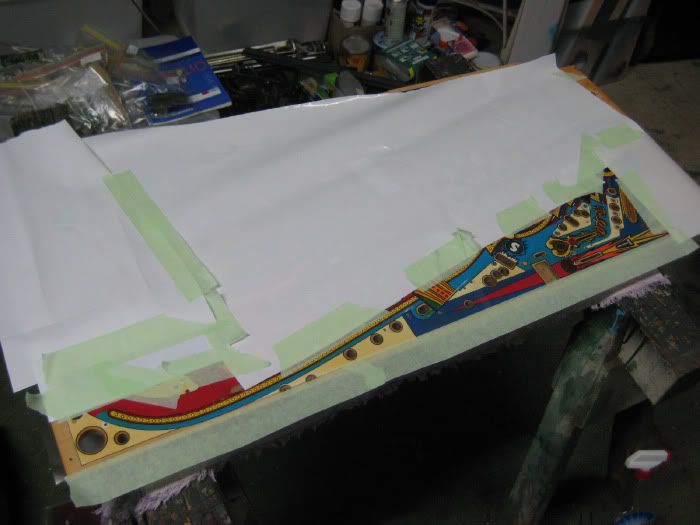
And the right too...
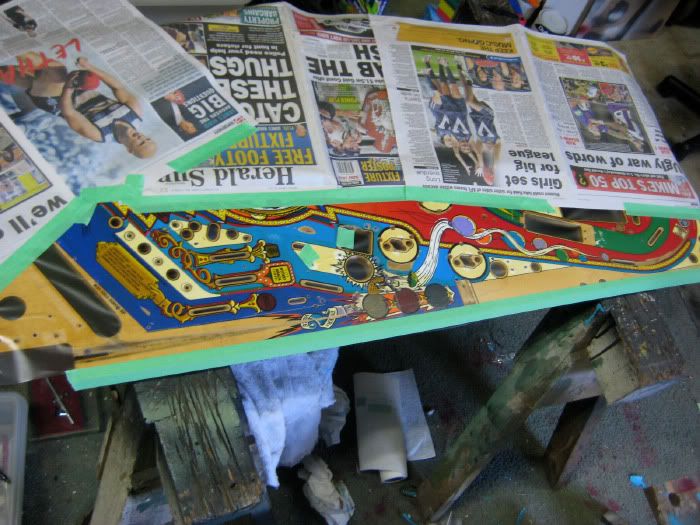
Acrylic paint is generally quite thick, which means you have to think about these things...
1. Thinning it down. I use a product called 'Airbrush Medium'. You can up to 50/50 ratio with your paint, however you may only need as little as a few drops to get the paint coming off the brush smoothly.
My product of choice...

2. Air pressure
Thicker paint will require more pressure to get an even flow of paint and air. To little or to much pressure will give you undesired results, such as a spatter effect, or uneven coverage. I cant stress enough the importance of having some scrap paper nearby to test your flow on BEFORE spraying on your playfield.
My Aero-Pro compressor...
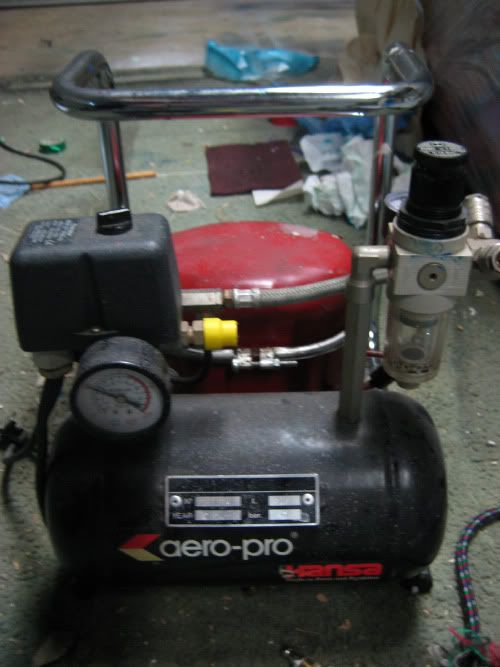
3. The Airbrush
Your airbrush will have certain settings, which will allow you to control the amount of paint to air, and the shape of your spray pattern. I wont get into this too much, as it really comes down to you knowing how your specific airbrush works. Get to know your brush, and its capabilities before spraying your playfield.
When you lay down your paint, i try not to spend too much time in one area. I move across my stencil left and right, similar to the way i cleared my playfield. This technique will gradually build up a very rich, even colour - WITHOUT creating a 'skin' of paint that looks separate from the playfield. You should aim for maximum colour, with minimal application.
Here is the result of my blue application. ** Please note that the blue is slightly different to the original Funhouse colour. I have had the colour matched, and will become 'richer' like the original hue once cleared.
Left side...
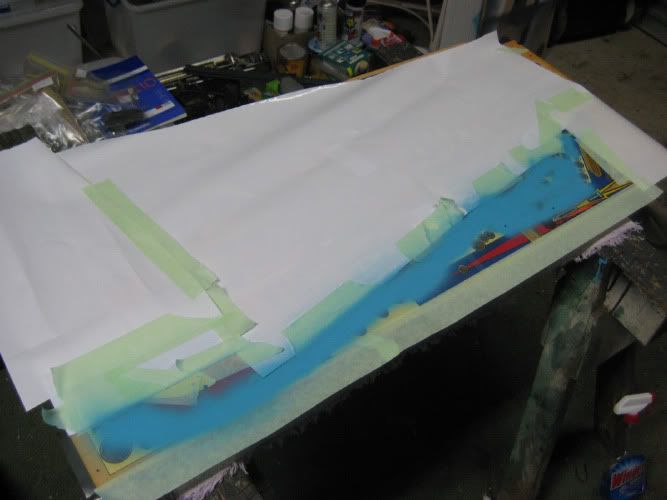
Right side...
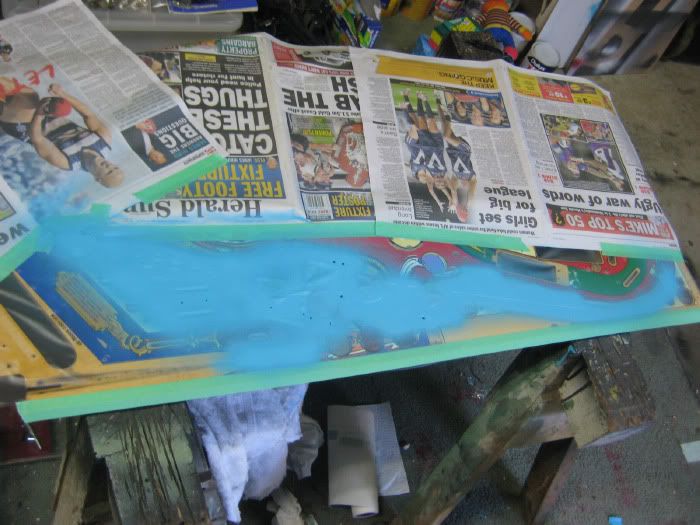
I would not recommend leaving the frisket mask on while the paint dries. This will only give the paint a film to stick to, and you risk pulling up all of your tedious masking work. Spray your area - give your brush a quick clean (just get all paint out of the line) - and then carefully remove the mask.
Once you remove the mask, it should look like this...
All the glamour...
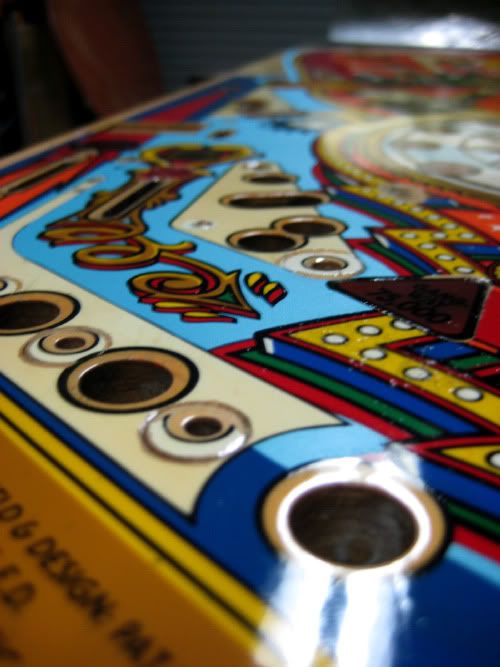
this shows that with a bit of patience, you can mask even the smallest of black lines (ie. the balloons)...
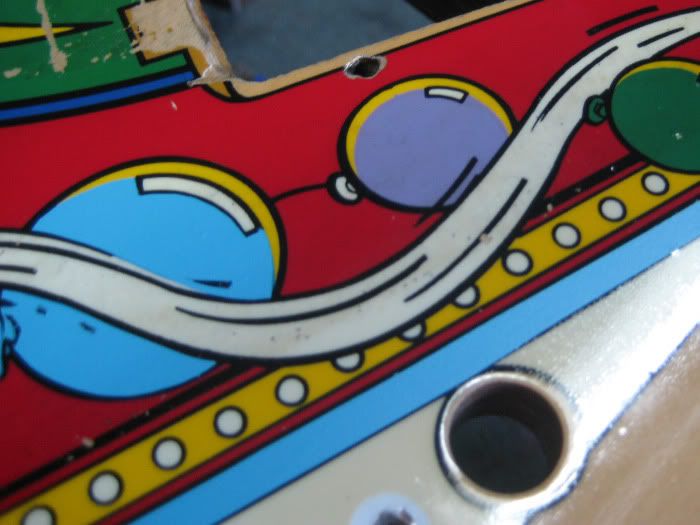
All around the star shape...
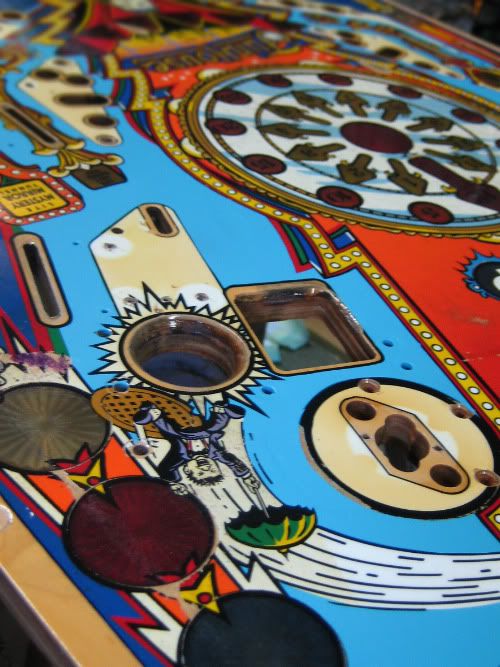
And the pop bumpers...

And the right inlane...The inlane art took the longest. Damn you John Youssi!! haha

These were the wear areas that i really wanted to address. The clear levelled them well, and my colour covered them perfectly...
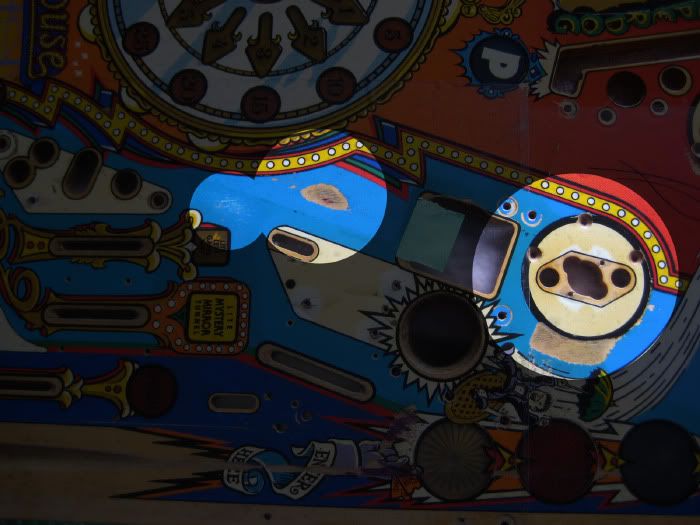
Thats pretty much it in terms of Frisket masking. I'm sure this hasnt covered EVERYTHING you need to know, but at least it may help some of you take the plunge, and give it a go yourself. Like i said, its really time consuming, but VERY rewarding when you see the mask coming off...it really does make it all worth while.
Its also a great feeling when you show someone and they cant pick the newly painted part...

Anyway, when you have finished spraying, clean your brush, bottle up any unused paint - and clean your work area. You dont want any unintended paint mixing going on around your playfield.
I hope you enjoyed the post, stay tuned for further updates...
el_timbo